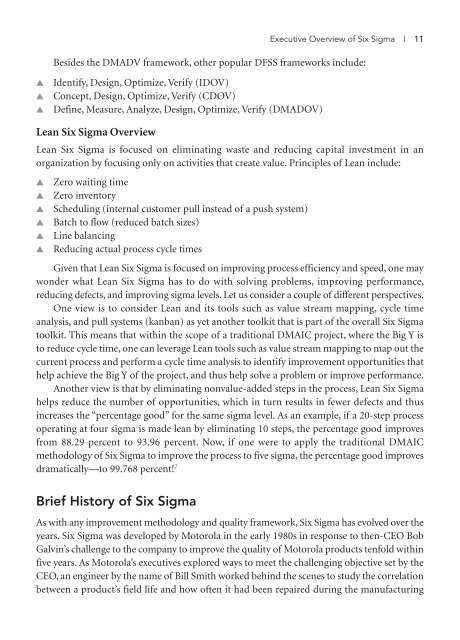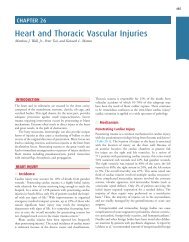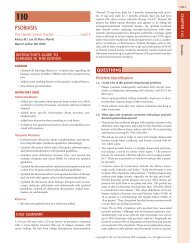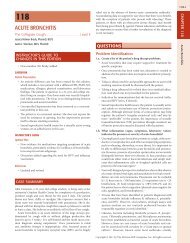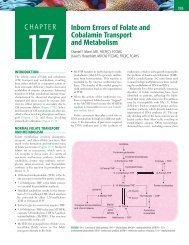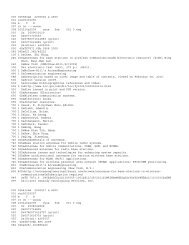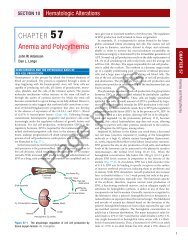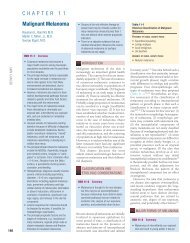Six Sigma Software Quality Improvement
Six Sigma Software Quality Improvement
Six Sigma Software Quality Improvement
You also want an ePaper? Increase the reach of your titles
YUMPU automatically turns print PDFs into web optimized ePapers that Google loves.
Besides the DMADV framework, other popular DFSS frameworks include:<br />
▲ Identify, Design, Optimize, Verify (IDOV)<br />
▲ Concept, Design, Optimize, Verify (CDOV)<br />
▲ Define, Measure, Analyze, Design, Optimize, Verify (DMADOV)<br />
Lean <strong>Six</strong> <strong>Sigma</strong> Overview<br />
Lean <strong>Six</strong> <strong>Sigma</strong> is focused on eliminating waste and reducing capital investment in an<br />
organization by focusing only on activities that create value. Principles of Lean include:<br />
▲ Zero waiting time<br />
▲ Zero inventory<br />
▲ Scheduling (internal customer pull instead of a push system)<br />
▲ Batch to flow (reduced batch sizes)<br />
▲ Line balancing<br />
▲ Reducing actual process cycle times<br />
Given that Lean <strong>Six</strong> <strong>Sigma</strong> is focused on improving process efficiency and speed, one may<br />
wonder what Lean <strong>Six</strong> <strong>Sigma</strong> has to do with solving problems, improving performance,<br />
reducing defects, and improving sigma levels. Let us consider a couple of different perspectives.<br />
One view is to consider Lean and its tools such as value stream mapping, cycle time<br />
analysis, and pull systems (kanban) as yet another toolkit that is part of the overall <strong>Six</strong> <strong>Sigma</strong><br />
toolkit. This means that within the scope of a traditional DMAIC project, where the Big Y is<br />
to reduce cycle time, one can leverage Lean tools such as value stream mapping to map out the<br />
current process and perform a cycle time analysis to identify improvement opportunities that<br />
help achieve the Big Y of the project, and thus help solve a problem or improve performance.<br />
Another view is that by eliminating nonvalue-added steps in the process, Lean <strong>Six</strong> <strong>Sigma</strong><br />
helps reduce the number of opportunities, which in turn results in fewer defects and thus<br />
increases the “percentage good” for the same sigma level. As an example, if a 20-step process<br />
operating at four sigma is made lean by eliminating 10 steps, the percentage good improves<br />
from 88.29 percent to 93.96 percent. Now, if one were to apply the traditional DMAIC<br />
methodology of <strong>Six</strong> <strong>Sigma</strong> to improve the process to five sigma, the percentage good improves<br />
dramatically—to 99.768 percent! 7<br />
Brief History of <strong>Six</strong> <strong>Sigma</strong><br />
Executive Overview of <strong>Six</strong> <strong>Sigma</strong> | 11<br />
As with any improvement methodology and quality framework, <strong>Six</strong> <strong>Sigma</strong> has evolved over the<br />
years. <strong>Six</strong> <strong>Sigma</strong> was developed by Motorola in the early 1980s in response to then-CEO Bob<br />
Galvin’s challenge to the company to improve the quality of Motorola products tenfold within<br />
five years. As Motorola’s executives explored ways to meet the challenging objective set by the<br />
CEO, an engineer by the name of Bill Smith worked behind the scenes to study the correlation<br />
between a product’s field life and how often it had been repaired during the manufacturing


